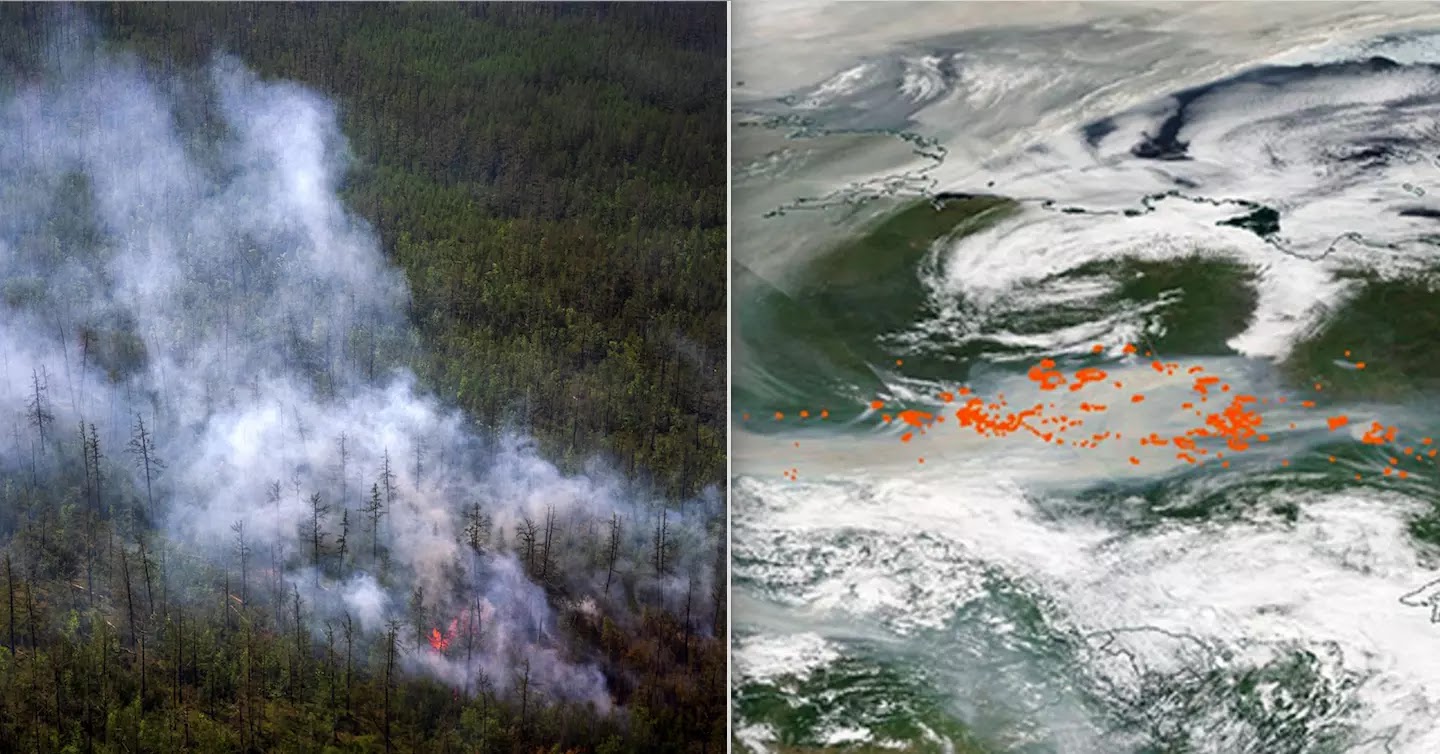
For the first time in recorded history, smoke from wildfires has reached the North Pole, the very top of the world, putting the climate crisis in stark reality.
The smoke is coming from huge wildfires that are engulfing the Siberia region of Russia, a vast area that is famed for its extremely low temperatures and harsh environment.
The smoke could be seen on satellite images released by NASA, drifting northwards from the Sakha Republic in Siberia. In total, around 2,000 miles from east to west and 2,500 miles north to south are at present covered in thick smoke.
Smoke from the fires is also being reported in Mongolia and northern China.
While wildfires are not entirely unheard of in the region, it is unusual for them to be on this scale and to be burning with such ferocity.
The Siberian region has been experiencing unusually high temperatures in recent weeks, with a ground temperature of 118 degrees Fahrenheit and an air temperature of 89.4 degrees being recorded.
Over recent years, there has also been reports of permafrost in Siberia melting. This is frost that has remained continuously frozen for tens of thousands of years. Climate scientists are particularly worried about this as it will mean that vast amounts of carbon stored by the permafrost will be released into the atmosphere. As carbon dioxide and other gases are the cause of global heating in the first place, such a release of gases could make the climate crisis and global warming much worse over a very short period of time.
Scientists are also worried that there could be bacteria and viruses trapped in the permafrost that could result in new pandemics sweeping the globe, diseases which humans have never before experienced.
Global leaders are meeting in Glasgow in November to discuss the climate emergency and make agreements on cutting carbon and other greenhouse gas emissions.
[h/t: NPR]














COMMENTS